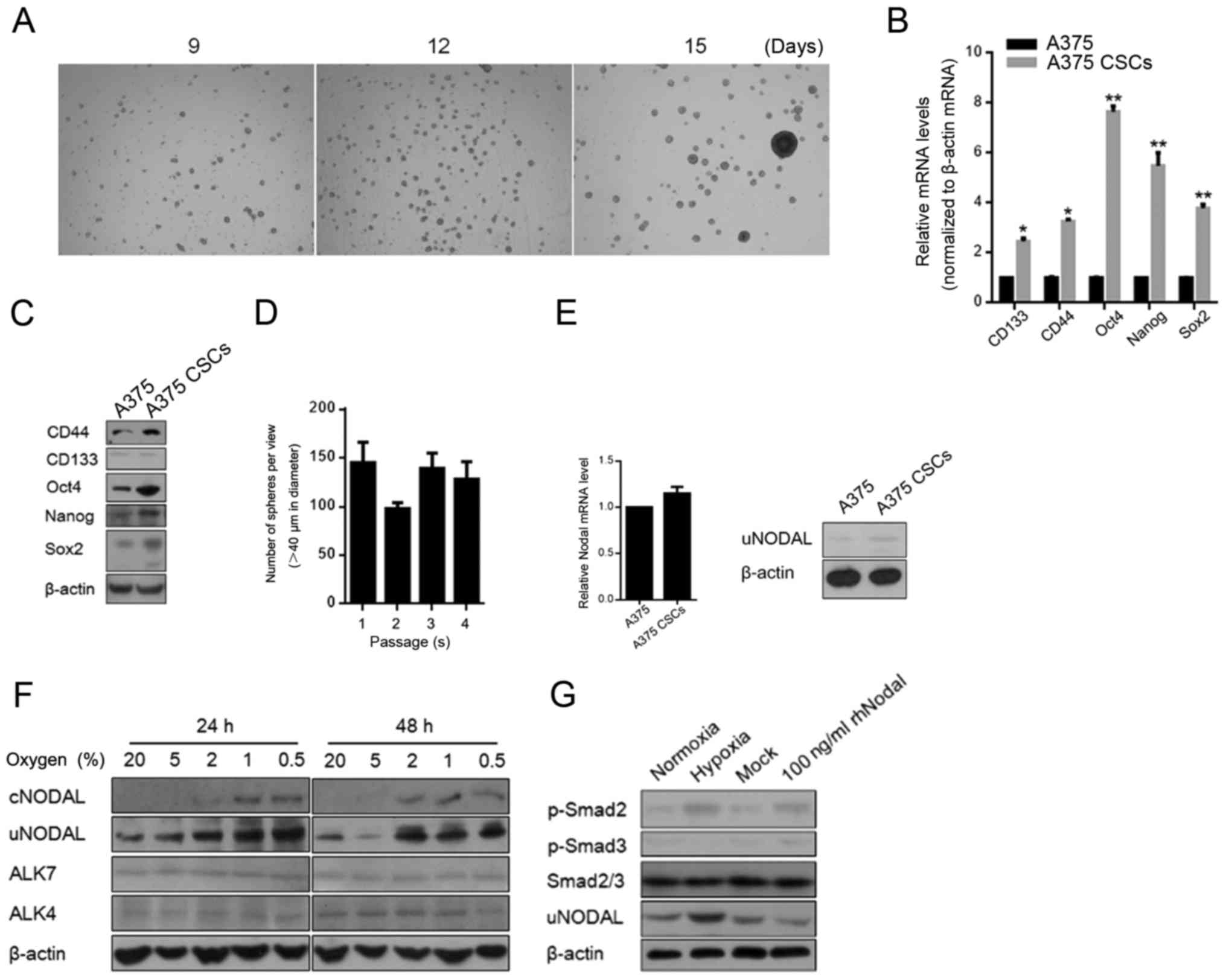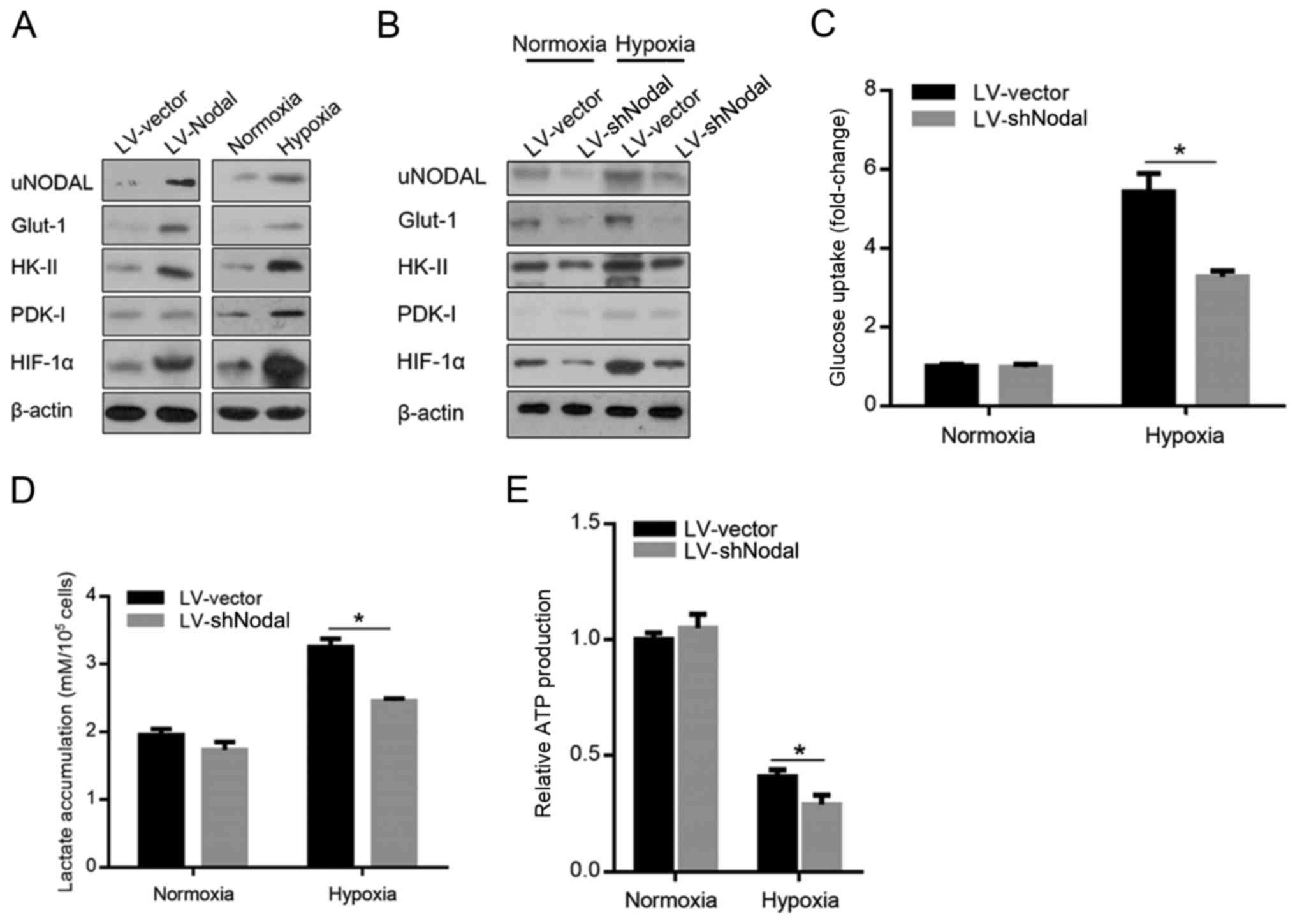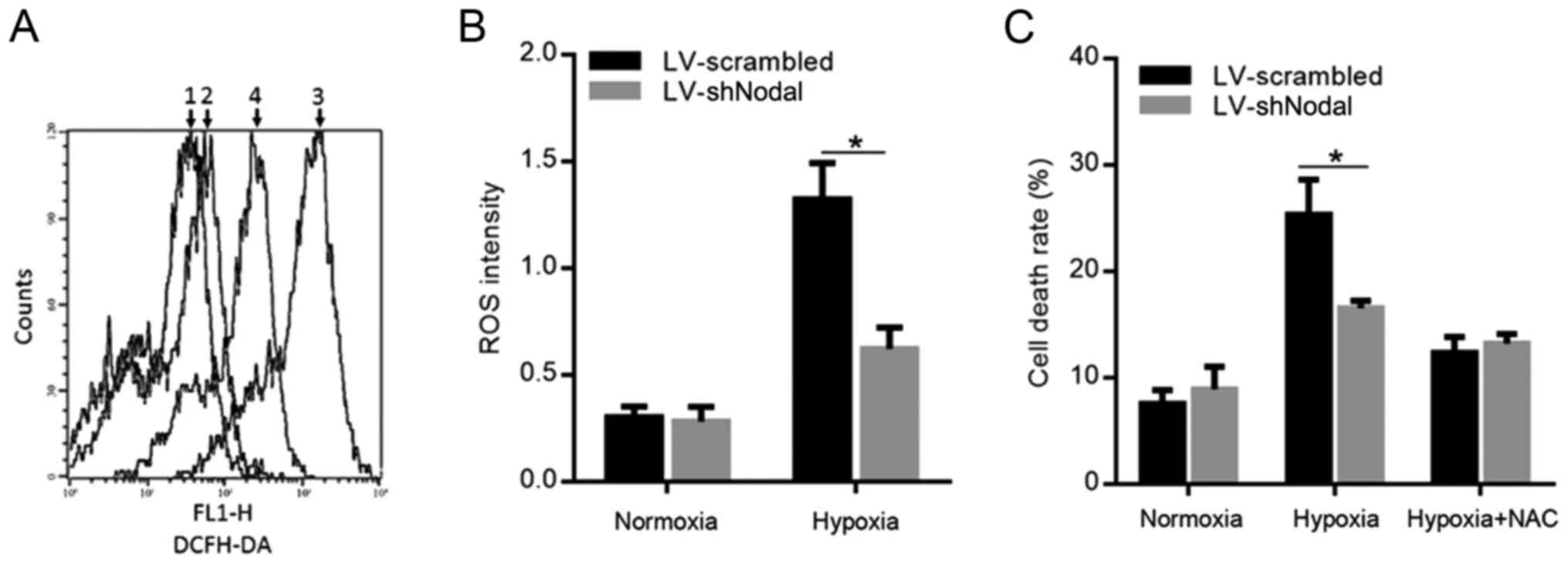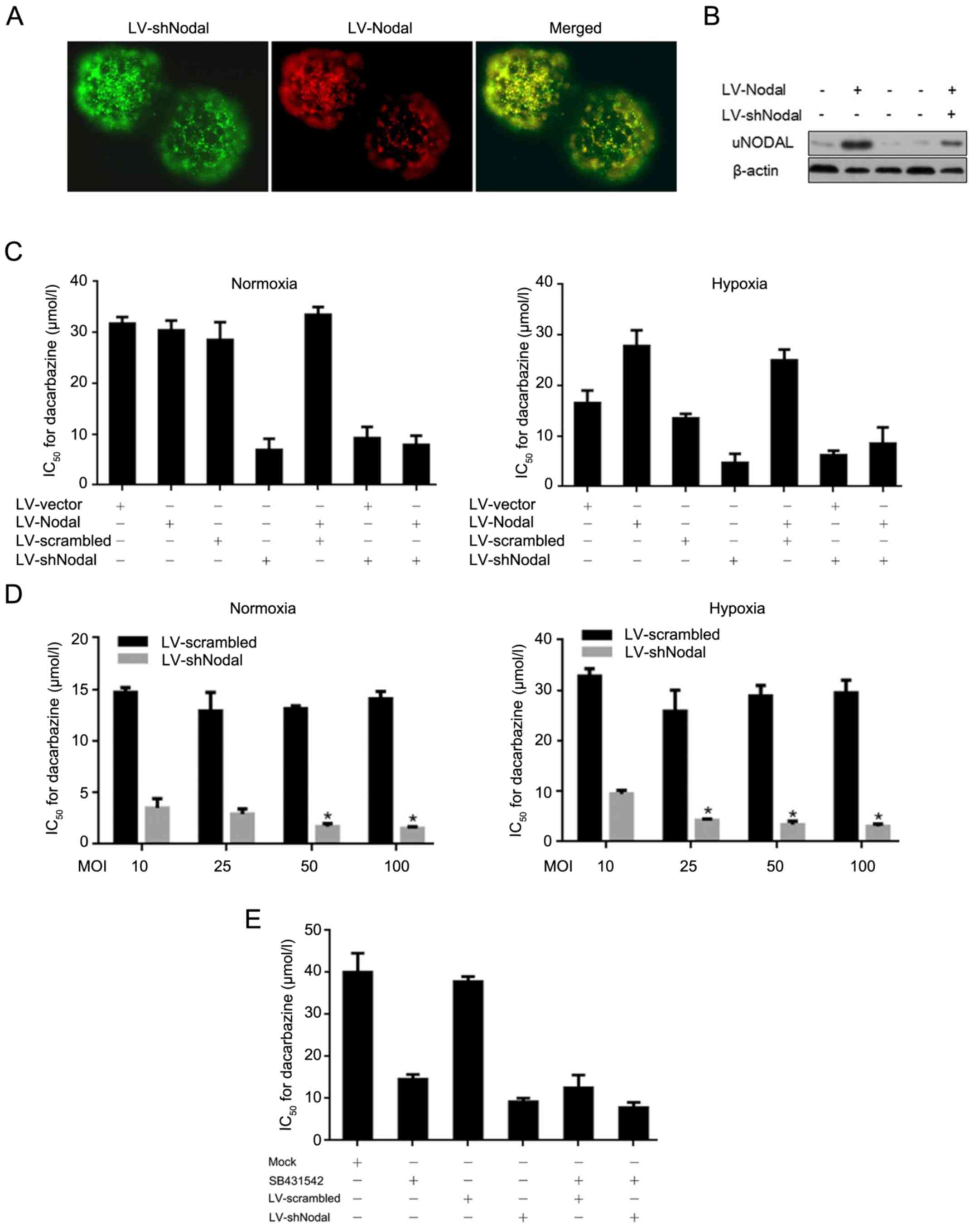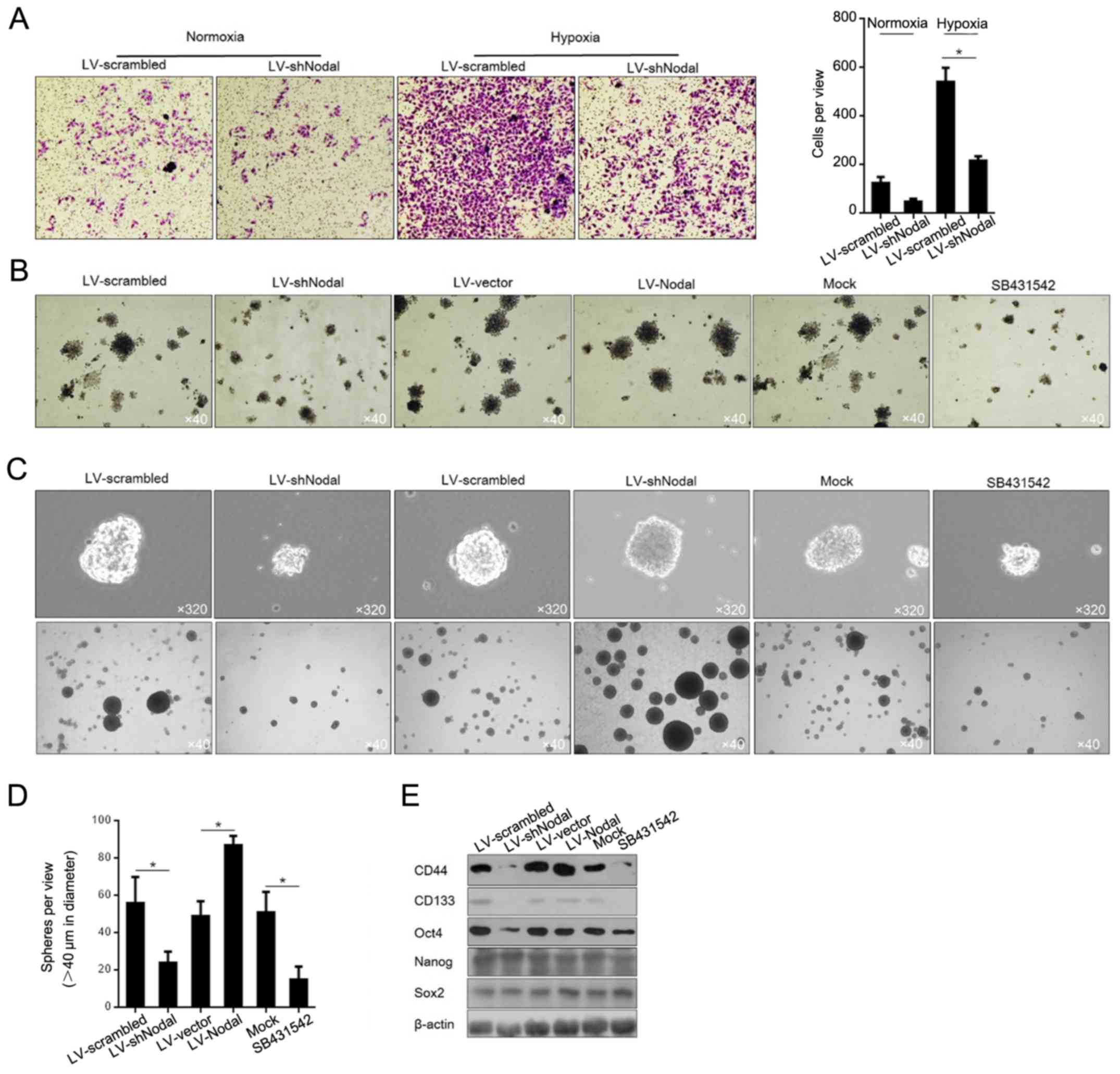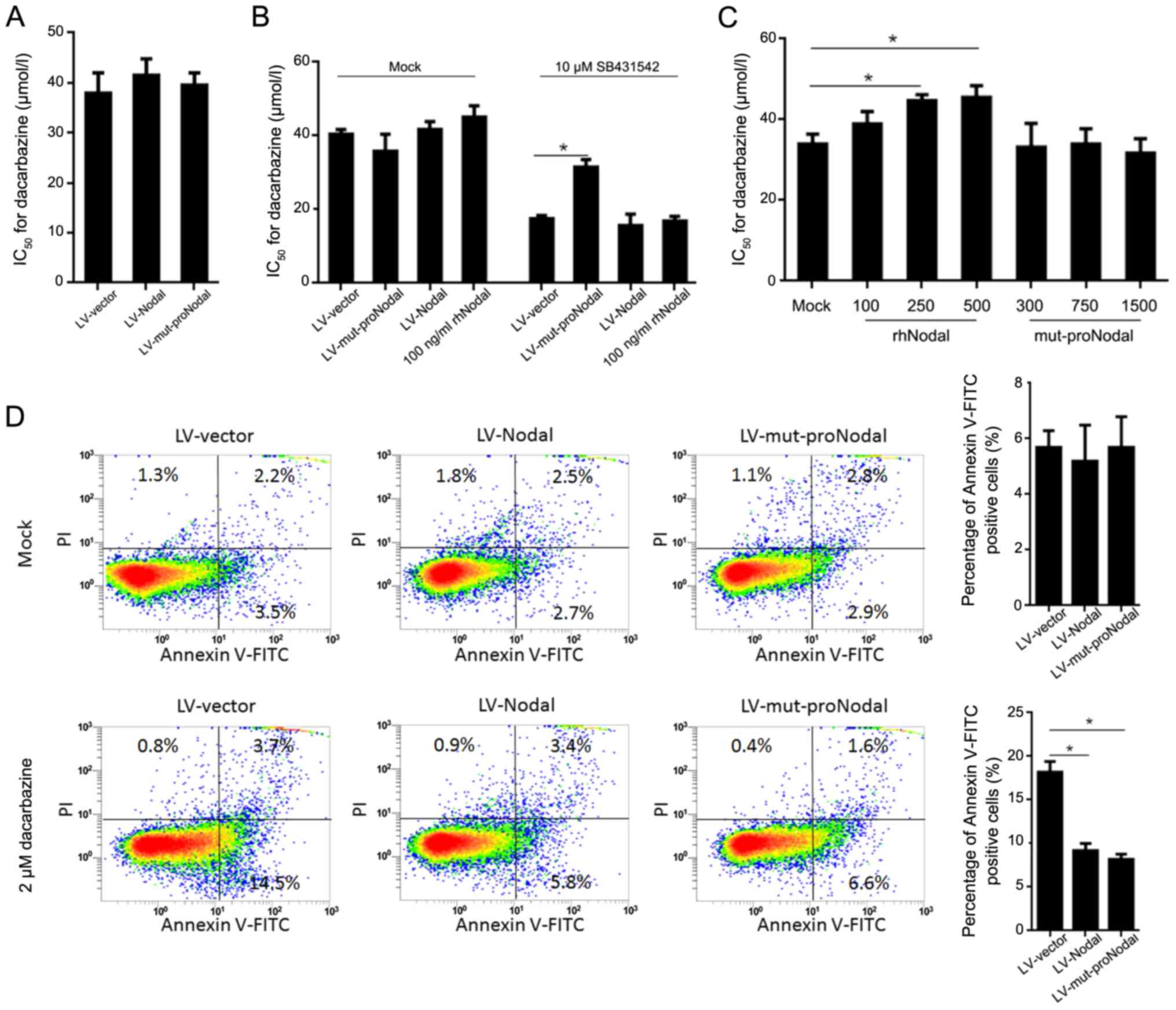|
1
|
Miller AJ and Mihm MC: Melanoma. N Engl J
Med. 355:51–65. 2006. View Article : Google Scholar : PubMed/NCBI
|
|
2
|
Godar DE: Worldwide increasing incidences
of cutaneous malignant melanoma. J Skin Cancer. 2011:8584252011.
View Article : Google Scholar : PubMed/NCBI
|
|
3
|
Reed KB, Brewer JD, Lohse CM, Bringe KE,
Pruitt CN and Gibson LE: Increasing incidence of melanoma among
young adults: An epidemiological study in Olmsted County,
Minnesota. Mayo Clin Proc. 87:328–334. 2012. View Article : Google Scholar : PubMed/NCBI
|
|
4
|
Bedia C, Casas J, Andrieu-Abadie N,
Fabriàs G and Levade T: Acid ceramidase expression modulates the
sensitivity of A375 melanoma cells to decarbazine. J Biol Chem.
286:28200–28209. 2011. View Article : Google Scholar : PubMed/NCBI
|
|
5
|
Mouawad R, Sebert M, Michels J, Bloch J,
Spano JP and Khayat D: Treatment for metastatic malignant melanoma:
Old drugs and new strategies. Crit Rev Oncol Hematol. 74:27–39.
2010. View Article : Google Scholar : PubMed/NCBI
|
|
6
|
Brennan J, Norris DP and Robertson EJ:
Nodal activity in the node governs left-right asymmetry. Genes Dev.
16:2339–2344. 2002. View Article : Google Scholar : PubMed/NCBI
|
|
7
|
Takenaga M, Fukumoto M and Hori Y:
Regulated nodal signaling promotes differentiation of the
definitive endoderm and mesoderm from ES cells. J Cell Sci.
120:2078–2090. 2007. View Article : Google Scholar : PubMed/NCBI
|
|
8
|
Topczewska JM, Postovit LM, Margaryan NV,
Sam A, Hess AR, Wheaton WW, Nickoloff BJ, Topczewski J and Hendrix
MJ: Embryonic and tumorigenic pathways converge via Nodal
signaling: Role in melanoma aggressiveness. Nat Med. 12:925–932.
2006. View
Article : Google Scholar : PubMed/NCBI
|
|
9
|
Lee CC, Jan HJ, Lai JH, Ma HI, Hueng DY,
Lee YC, Cheng YY, Liu LW, Wei HW and Lee HM: Nodal promotes growth
and invasion in human gliomas. Oncogene. 29:3110–3123. 2010.
View Article : Google Scholar : PubMed/NCBI
|
|
10
|
Lawrence MG, Margaryan NV, Loessner D,
Collins A, Kerr KM, Turner M, Seftor EA, Stephens CR, Lai J; APC
BioResource, ; et al: Reactivation of embryonic nodal signaling is
associated with tumor progression and promotes the growth of
prostate cancer cells. Prostate. 71:1198–1209. 2011. View Article : Google Scholar : PubMed/NCBI
|
|
11
|
Quail DF, Zhang G, Walsh LA, Siegers GM,
Dieters-Castator DZ, Findlay SD, Broughton H, Putman DM, Hess DA
and Postovit LM: Embryonic morphogen nodal promotes breast cancer
growth and progression. PLoS One. 7:e482372012. View Article : Google Scholar : PubMed/NCBI
|
|
12
|
Papageorgiou I, Nicholls PK, Wang F,
Lackmann M, Makanji Y, Salamonsen LA, Robertson DM and Harrison CA:
Expression of nodal signalling components in cycling human
endometrium and in endometrial cancer. Reprod Biol Endocrinol.
7:1222009. View Article : Google Scholar : PubMed/NCBI
|
|
13
|
Lonardo E, Hermann PC, Mueller MT, Huber
S, Balic A, Miranda-Lorenzo I, Zagorac S, Alcala S,
Rodriguez-Arabaolaza I, Ramirez JC, et al: Nodal/Activin signaling
drives self-renewal and tumorigenicity of pancreatic cancer stem
cells and provides a target for combined drug therapy. Cell Stem
Cell. 9:433–446. 2011. View Article : Google Scholar : PubMed/NCBI
|
|
14
|
Fuerer C, Nostro MC and Constam DB:
Nodal·Gdf1 heterodimers with bound prodomains enable
serum-independent nodal signaling and endoderm differentiation. J
Biol Chem. 289:17854–17871. 2014. View Article : Google Scholar : PubMed/NCBI
|
|
15
|
Ellis PS, Burbridge S, Soubes S, Ohyama K,
Ben-Haim N, Chen C, Dale K, Shen MM, Constam D and Placzek M:
ProNodal acts via FGFR3 to govern duration of Shh expression in the
prechordal mesoderm. Development. 142:3821–3832. 2015. View Article : Google Scholar : PubMed/NCBI
|
|
16
|
Cabarcas SM, Mathews LA and Farrar WL: The
cancer stem cell niche-there goes the neighborhood? Int J Cancer.
129:2315–2327. 2011. View Article : Google Scholar : PubMed/NCBI
|
|
17
|
Hanahan D and Weinberg RA: Hallmarks of
cancer: The next generation. Cell. 144:646–674. 2011. View Article : Google Scholar : PubMed/NCBI
|
|
18
|
Zhu H, Wang D, Liu Y, Su Z, Zhang L, Chen
F, Zhou Y, Wu Y, Yu M, Zhang Z and Shao G: Role of the
Hypoxia-inducible factor-1 alpha induced autophagy in the
conversion of non-stem pancreatic cancer cells into
CD133+ pancreatic cancer stem-like cells. Cancer Cell
Int. 13:1192013. View Article : Google Scholar : PubMed/NCBI
|
|
19
|
Quail DF, Taylor MJ, Walsh LA,
Dieters-Castator D, Das P, Jewer M, Zhang G and Postovit LM: Low
oxygen levels induce the expression of the embryonic morphogen
Nodal. Mol Biol Cell. 22:4809–4821. 2011. View Article : Google Scholar : PubMed/NCBI
|
|
20
|
Zhou S, Kurt-Jones EA, Cerny AM, Chan M,
Bronson RT and Finberg RW: MyD88 intrinsically regulates CD4 T-cell
responses. J Virol. 83:1625–1634. 2009. View Article : Google Scholar : PubMed/NCBI
|
|
21
|
dos Santos SC, Tenreiro S, Palma M, Becker
J and Sá-Correia I: Transcriptomic profiling of the
Saccharomyces cerevisiae response to quinine reveals a
glucose limitation response attributable to drug-induced inhibition
of glucose uptake. Antimicrob Agents Chemother. 53:5213–5223. 2009.
View Article : Google Scholar : PubMed/NCBI
|
|
22
|
Walsh MC, Smits HP, Scholte M and van Dam
K: Affinity of glucose transport in Saccharomyces cerevisiae is
modulated during growth on glucose. J Bacteriol. 176:953–958. 1994.
View Article : Google Scholar : PubMed/NCBI
|
|
23
|
Constam DB and Robertson EJ: Regulation of
bone morphogenetic protein activities by prodomains and proprotein
convertases. J Cell Biol. 144:139–149. 1999. View Article : Google Scholar : PubMed/NCBI
|
|
24
|
Vo BT and Khan SA: Expression of nodal and
nodal receptors in prostate stem cells and prostate cancer cells:
Autocrine effects on cell proliferation and migration. Prostate.
71:1084–1096. 2011. View Article : Google Scholar : PubMed/NCBI
|
|
25
|
Lai JH, Jan HJ, Liu LW, Lee CC, Wang SG,
Hueng DY, Cheng YY, Lee HM and Ma HI: Nodal regulates energy
metabolism in glioma cells by inducing expression of
hypoxia-inducible factor 1α. Neuro Oncol. 15:1330–1341. 2013.
View Article : Google Scholar : PubMed/NCBI
|
|
26
|
Papandreou I, Cairns RA, Fontana L, Lim AL
and Denko NC: HIF-1 mediates adaptation to hypoxia by actively
downregulating mitochondrial oxygen consumption. Cell Metab.
3:187–197. 2006. View Article : Google Scholar : PubMed/NCBI
|
|
27
|
Wang F, Zhang GY, Xing T, Lu ZY, Li JH,
Peng C, Liu GH and Wang NS: Renalase contributes to the renal
protection of delayed ischaemic preconditioning via the regulation
of hypoxia-inducible factor-1α. J Cell Mol Med. 19:1400–1409. 2015.
View Article : Google Scholar : PubMed/NCBI
|
|
28
|
Jian SL, Chen WW, Su YC, Su YW, Chuang TH,
Hsu SC and Huang LR: Glycolysis regulates the expansion of
myeloid-derived suppressor cells in tumor-bearing hosts through
prevention of ROS-mediated apoptosis. Cell Death Dis. 8:e27792017.
View Article : Google Scholar : PubMed/NCBI
|
|
29
|
Elliott RL and Blobe GC: Role of
transforming growth factor beta in human cancer. J Clin Oncol.
23:2078–2093. 2005. View Article : Google Scholar : PubMed/NCBI
|
|
30
|
Glasgow E and Mishra L: Transforming
growth factor-beta signaling and ubiquitinators in cancer. Endocr
Relat Cancer. 15:59–72. 2008. View Article : Google Scholar : PubMed/NCBI
|
|
31
|
Beck S, Le Good JA, Guzman M, Ben Haim N,
Roy K, Beermann F and Constam DB: Extraembryonic proteases regulate
nodal signaling during gastrulation. Nat Cell Biol. 4:981–985.
2002. View
Article : Google Scholar : PubMed/NCBI
|
|
32
|
Ben-Haim N, Lu C, Guzman-Ayala M,
Pescatore L, Mesnard D, Bischofberger M, Naef F, Robertson EJ and
Constam DB: The nodal precursor acting via activing receptors
induces mesoderm by maintaining a source of its convertases and
BMP4. Dev Cell. 11:313–323. 2006. View Article : Google Scholar : PubMed/NCBI
|
|
33
|
Eimon PM and Harland RM: Effects of
heterodimerization and proteolytic processing on derriere and nodal
activity: Implications for mesoderm induction in xenopus.
Development. 129:3089–3103. 2002.PubMed/NCBI
|
|
34
|
Strizzi L, Postovit LM, Margaryan NV,
Seftor EA, Abbott DE, Seftor RE, Salomon DS and Hendrix MJ:
Emerging roles of nodal and Cripto-1: From embryogenesis to breast
cancer progression. Breast Dis. 29:91–103. 2008. View Article : Google Scholar : PubMed/NCBI
|
|
35
|
Shen MM: Nodal signaling: Developmental
roles and regulation. Development. 134:1023–1034. 2007. View Article : Google Scholar : PubMed/NCBI
|
|
36
|
Duan W, Li R, Ma J, Lei J, Xu Q, Jiang Z,
Nan L, Li X, Wang Z, Huo X, et al: Overexpression of nodal induces
a metastatic phenotype in pancreatic cancer cells via the Smad2/3
pathway. Oncotarget. 6:1490–1506. 2015. View Article : Google Scholar : PubMed/NCBI
|
|
37
|
Strizzi L, Postovit LM, Margaryan NV,
Lipavsky A, Gadiot J, Blank C, Seftor RE, Seftor EA and Hendrix MJ:
Nodal as a biomarker for melanoma progression and a new therapeutic
target for clinical intervention. Expert Rev Dermatol. 4:67–78.
2009. View Article : Google Scholar : PubMed/NCBI
|
|
38
|
Postovit LM, Margaryan NV, Seftor EA,
Kirschmann DA, Lipavsky A, Wheaton WW, Abbott DE, Seftor RE and
Hendrix MJ: Human embryonic stem cell microenvironment suppresses
the tumorigenic phenotype of aggressive cancer cells. Proc Natl
Acad Sci USA. 105:4329–4334. 2008. View Article : Google Scholar : PubMed/NCBI
|
|
39
|
Brennan J, Lu CC, Norris DP, Rodriguez TA,
Beddington RS and Robertson EJ: Nodal signaling in the epiblast
patterns the early mouse embryo. Nature. 411:965–969. 2001.
View Article : Google Scholar : PubMed/NCBI
|
|
40
|
Cioffi M, Trabulo SM, Sanchez-Ripoll Y,
Miranda-Lorenzo I, Lonardo E, Dorado J, Vieira Reis C, Ramirez JC,
Hidalgo M, Aicher A, et al: The miR-17-92 cluster counteracts
quiescence and chemoresistance in a distinct subpopulation of
pancreatic cancer stem cells. Gut. 64:1936–1948. 2015. View Article : Google Scholar : PubMed/NCBI
|



